|
It’s a
scary world out there, and this is a list that may end up scaring the
crap out of you. That’s because we are going to take an in-depth look at
some of the deadliest creatures that you can find all around the world.
Evidently, a large majority of these creatures and insects can be found
in Australia, but there are other deadly insects in Africa, Asia, and
the Middle East. This list includes scorpions, snakes, frogs, spiders,
marine animals and more. Have fun reading a bit more about these
scary-lethal animals and insects and make a mental note not to touch
anything that you find out in the wild. Are you ready to see the some
Deadliest Venoms That Would Kill You in Under 4 Minutes?
Now, some of these creatures and critters will kill you very quickly if
the bite is left untreated. Fortunately, we are living in the 21st
century, and that means that medical and scientific advancements are
helping us to survive these bites. For instance, if you get bitten by a
cobra or rattlesnake, you can survive if the bite is treated promptly.
Yet a bite from a Red Indian Scorpion or an Australian Box Jellyfish
could lead to a painful and terrifying death in a matter of minutes.
Your best bet would probably be to stay away from tropical rain forests,
the coasts and seas of Australia, and the jungles of New Guinea. But
hey, that’s just our opinion. You do what you want!
|
|
Poison Dart Frog
Bright vibrant colors define the appearance of the poison dart frog. And
while it looks like so much fun to have around, it secretes highly toxic
chemicals that can kill you. The poison dart frog is native to Central
and South America, although you can find them in zoos in North America.
These frogs change color based on how threatened they feel, and the
toxic venom comes from the ants and termites that the frogs eat. The
name “Poison Dart Frog” came from the old practice of dipping the tips
of darts in the frog’s secretion to create poisoned darts to throw at
enemies. The main toxins in the frog’s secretion are lipophilic
alkaloids, and the differing coloration of the frogs tends to turn
predators away because they seem unappetizing. The venom can cause pain
and even death if left untreated. Even so, scientists have been
investigating how to use poison dart frog venom as a painkiller. |
|
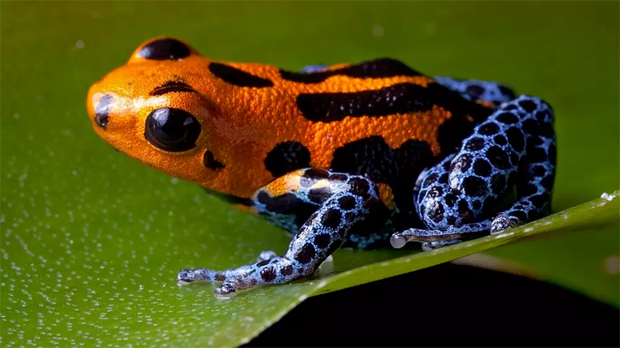 |
|
Pufferfish
This carnivorous fish is known for being lethal if consumed without
taking the proper cooking and preparatory precautions. The Pufferfish
can grow up to three feet and its toxins are deadly to many (although
there are a few fish that are immune to Pufferfish venom). The poison in
a Pufferfish is known as Tetrodotoxin, which is 1,200 times more deadly
than cyanide. Wow. The toxins in a single pufferfish could kill 30
humans. There is no cure for treating a pufferfish infection, so your
best bet is to STAY AWAY. Pufferfish are such named because they puff up
and inflate their stomachs to fend off potential predators. Typically,
pufferfish swim very slowly and that may contribute to the inflatability
they have adapted. These fish can also swallow large amounts of water to
puff themselves up so that they are too big for predatory fish to eat.
Perhaps the most famous Pufferfish is Mrs. Puff from Spongebob
Squarepants. |
|
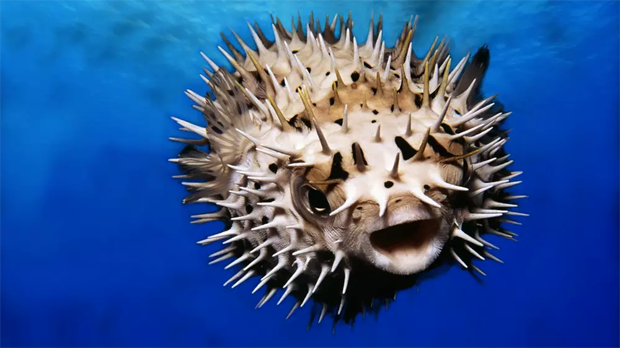
|
|
Pitohui Bird
Quite a beautiful bird, the Pitohui is native to New Guinea. These
brightly colored birds consume both meat and plants and the skin and
feathers of the Pitohui contain neurotoxins such as alkaloids and
batrachotoxins. These are the same venoms that are secreted by the
poison dart frog. The venom in the Pitohui’s skin and feathers enable it
to protect itself from parasites, as well as predatory animals and other
birds; even humans. The batrachotoxins come from the bird’s consumption
of a certain Choresine beetle. The people of New Guinea call these birds
“rubbish birds” because they are inedible. However, in times of famine,
the Pitohui can be eaten if it is skinned and plucked of its feathers.
The Pitohui are very lovely to look at, but those bright colors are
actually a result of warning coloration to fend off any predators or
threats. This feature is shared by the other species of Pitohui birds. |
|
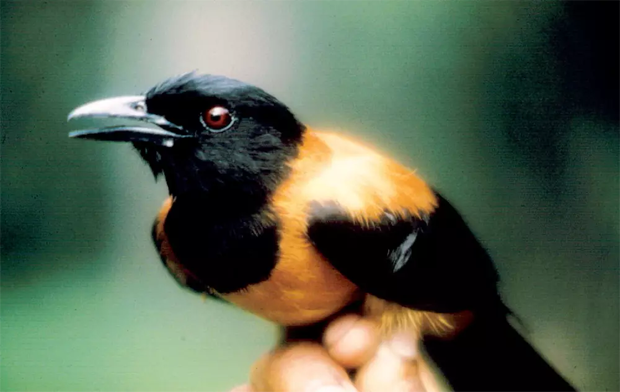
|
|
Taipan Snake
Belonging to the Oxyuranus genus of snakes, the Taipan is a scary-lethal
snake found in Australia. These snakes are large, but they can slither
very quickly. Their venom is responsible for many sicknesses and even
deaths in the Australasia region. Taipans eat small mammals like rats,
rodents, and bandicoots. Their venom contains a highly poisonous
neurotoxin which paralyzes the nervous system and blocks blood vessels
by rapidly clotting the blood. Due to the Taipan’s size, it can inject a
good amount of venom with just one snake bite. Taipans that are found
more inland are more timid than the Taipans you will find on the coasts
of Queensland. Taipans measure out anywhere between 1.8 and 2.5 meters,
and the females lay between 12 and 20 eggs at a time. Throughout the
year the Taipan Snake can vary in color, sometimes it is dark brown
while at other times during the year it is more yellowish. |
|
 |
|
Indian Red Scorpion
When you think about the fact that scorpions have been on Earth for a
really long time – they outlasted the dinosaurs for crying out loud! –
then it is easy to have greater respect for these creepy creatures. Like
the Tunisian Fat-Tailed Scorpion, the Indian Red Scorpion is said to be
one of the deadliest in the world. According to National Geographic, the
Indian Red is the most lethal. Found in parts of India, the Indian Red
is very little; about the size of a thumb. It walks on eight legs and
two pincers that it uses to grab and pinch. The color is a light brown
or tan shade, and they are nocturnal and wait for prey rather than hunt
it. They tend to hide out where humans hang out, such as in closets or
crevices, and they are often found in the outside areas surrounding
houses. This makes Indian Red stings quite common among Indian children
who are playing outside in the yard.
|
|
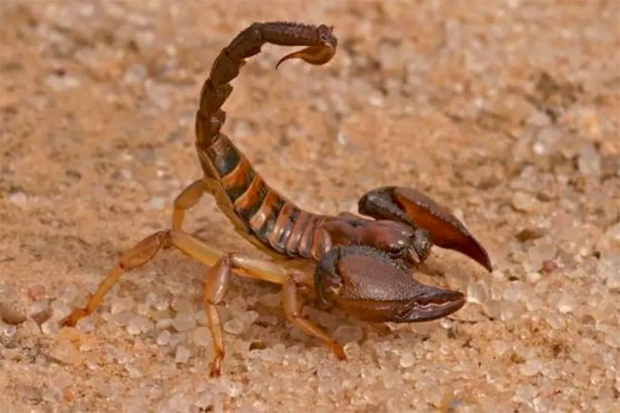 |
|
Tunisian Fat-Tailed Scorpion
As you would expect, you can find this scorpion in Tunisia, as well as
in other regions in Africa and the Middle East. Belonging to the genus
Androctonus, the Tunisian fat-tailed scorpion is considered by many to
be the deadliest scorpion on Earth. Growing up to four inches, they have
a very chubby tail, which is nicknamed the “man killer.” The venom of
this scorpion can kill a human in just a few minutes thanks to its
potent neurotoxins. Dozens of deaths a year are reported from the
Tunisian fat-tailed scorpion, and it is the subject of Michael R.
Linaker’s novel Scorpion and Scorpion: Second Generation. The scorpion
was even the inspiration for the band name Acrassicauda. Even though
these are the deadliest scorpions in the world, they are heavily
smuggled and trafficked across borders and are even sold as exotic pets.
Who in the world would buy this thing!?
|
|
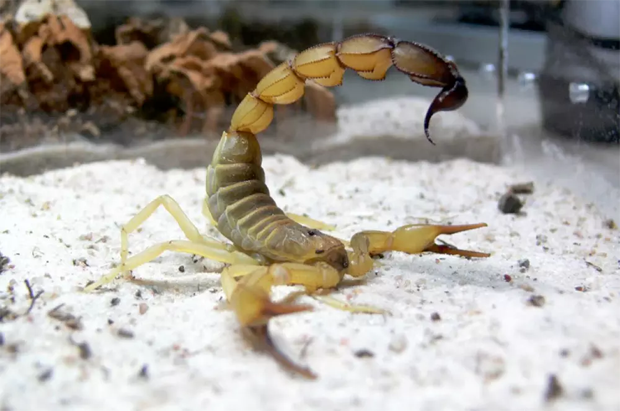 |
|
Stonefish
Often cited as the most venomous and deadliest fish in the world, the
Stonefish can be found in the Indo-Pacific seas. The stonefish is quite
small, but that doesn’t mean it can’t pack a powerful punch. This fish
has 13 spines, with each one holding a number of venom-filled sacs. In
the Indo-Pacific seas, you can find five species of stonefish, and even
though they are so venomous, they first capture their prey with their
agility and speed. An attack from a stonefish can last just 0.0015
seconds, although in their daily activities, they just meander along
slowly. Stonefish also possess impressive camouflage skills, and their
venom is used in defense so they are not really known as venomous
predators. However, if you step on a hiding stonefish, it will inject
your foot with poison from its spines which can cause heart failure,
pain, and even death within minutes.
|
|
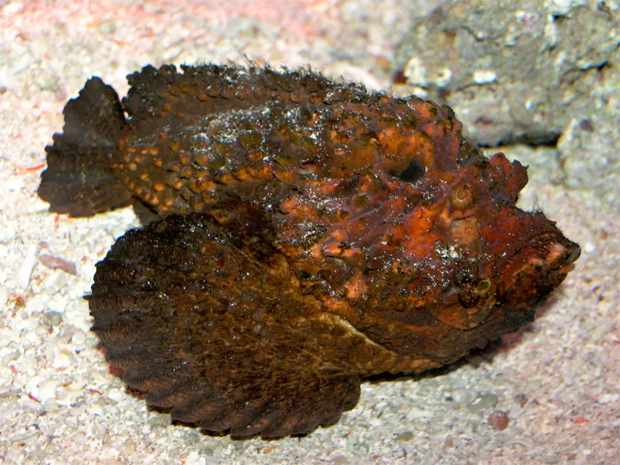 |
|
Funnel-Web Spider
The funnel-web spider is found throughout Australia, and it is one of
the deadliest spiders in the world. A bite from this spider could kill
you quite rapidly, although modern advancements in medicine and science
have helped us combat these spider bites. That’s somewhat of a relief.
Even so, the toxins in this spider’s venom are vast and varied, and most
of them cause severe physiological problems such as a huge adrenaline
rush. The funnel-web spider has relatively large fangs, making the
spider bite painful and intense. Along with the blood, the effects of
the venom’s injection begin to take place rather quickly. These effects
are sweating, swollen mouth and tongue, twitching, and high heart rate
and blood pressure. Vomiting, shortness of breath, hypertension, and
swelling can occur. Death could happen in mere minutes, but in 1981 an
antivenom medication was developed which greatly reduced funnel-web
spider deaths. Yay! |
|
 |